If you are looking to re-energize, recharge and revive tired garden soil before you plant your garden this spring – then you need to use the power of a green manure crop! Not only is it easy to do, it can add amazing power and nutrients to your soil – and all for a fraction of the cost of expensive fertilizers and soil amendments.
Green manure crops are one of the most misunderstood of all garden crops. Contrary to popular belief, they have nothing to do at all with manure or animals. Nor are they a crop you plant with any intention of providing a harvest.
Instead, you plant a green manure crop in a garden or soil space with the sole purpose of giving all of its energy and nutrients right back to the soil. And does it ever do so in quick fashion. It’s even great for raised beds too!
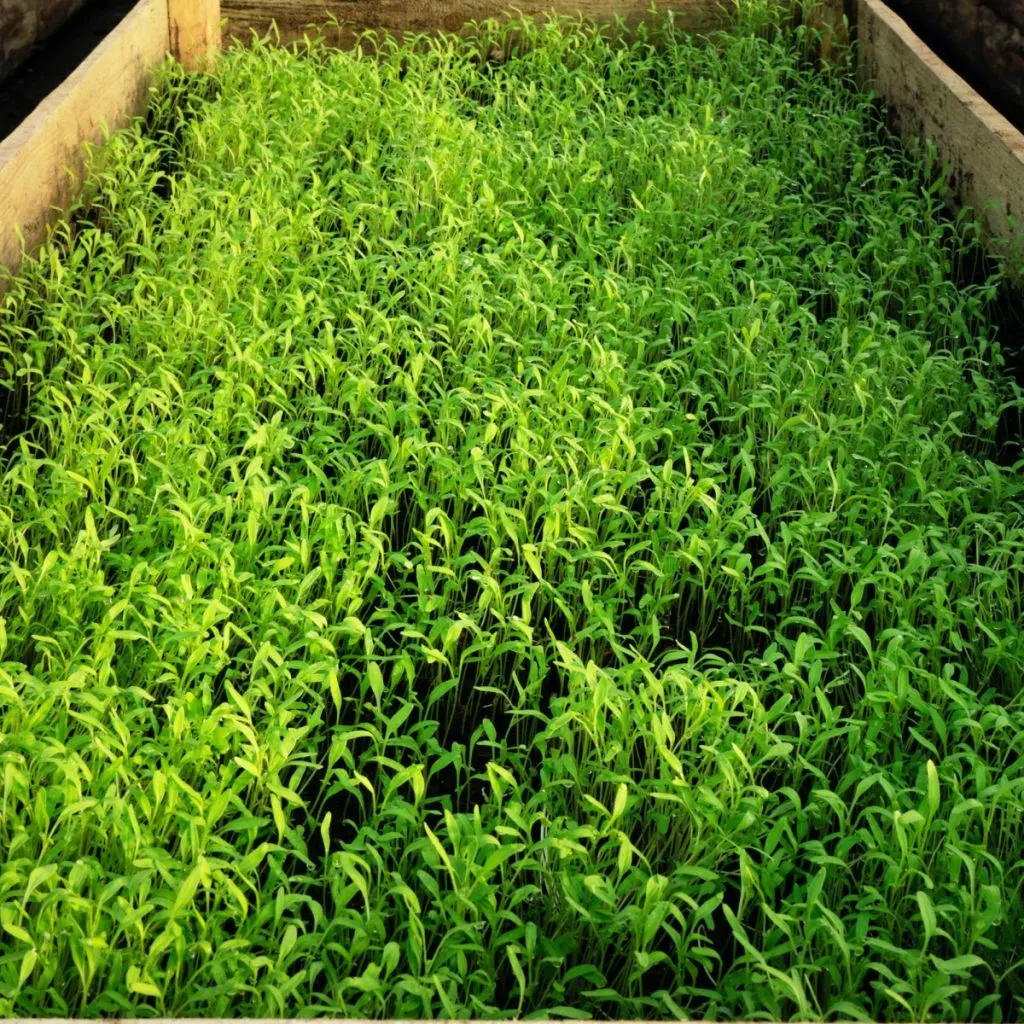
Using A Green Manure Crop To Revive & Recharge Soil
There are actually a couple of different times you can plant green manure crops throughout the growing season.
You can plant them in the early spring to help replace nutrients from last year’s garden. They can also be planted in the middle of a garden season after harvesting an early spring crop – but before planting a fall crop. Once again, powering up and recharging the garden soil before a crop goes in.
Unlike a fall over crop, a green manure crop does not grow in the ground long. A true cover crop is usually planted in the fall and left to overwinter. As spring arrives, it is then tilled or cut down to help give nutrients back to the soil.
But a green manure crop grows for just a short period of time. It germinates and fills a soil space quickly. And then, within just a few weeks (usually three to four weeks), it is cut down and worked into the soil while it is still green, alive, and most importantly, full of nutrients.
The Benefits Of Using A Green Manure Crop
When this process takes place, the “green” energy from the plant provides instant nutrients to recharge the garden soil. And that happens to be perfect before spring planting, right before your late spring and summer vegetable plants go in the ground.
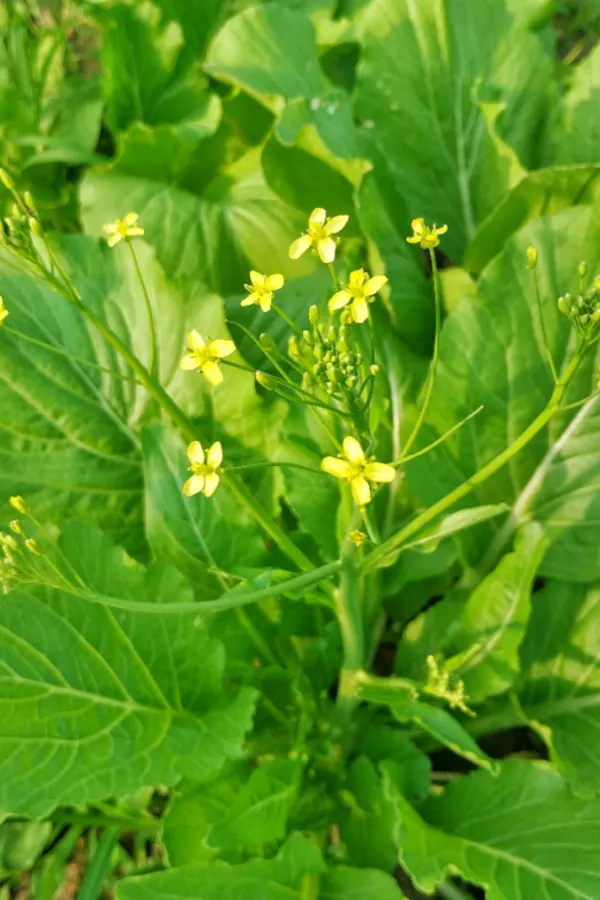
A green manure crop is the perfect way to add structure, organic matter, and energy to your soil. Even more, depending on which crop you grow, it can also help to fix nitrogen levels in the soil, making it available for the next garden crop to fill the space!
With all of those benefits in mind, here is an in-depth look at how and when to plant green manure crops, along with a look at end of the article at some of the best green manure crops to grow to help recharge your garden’s soil.
When To Plant
A green manure crop can successfully go in the ground quite early in the spring. Especially if you plant a cool-weather loving crop such as field peas, mustard greens or clover.
All of these seeds can go in the ground with success in early spring while the soil is still cool. Clover can germinate in soil temperatures as low as 38°(F). Field peas, meanwhile, can sprout in soil temperatures that linger at 40°(F) or more, while mustard can still germinate at 45°(F), making them all excellent for early spring green manure crops.
The quick growth is exactly what makes a green manure crop perfect for planting and recharging your entire garden space in early spring – before planting your summer garden. And what could be better than giving your soil a big boost before big feeding vegetables like tomatoes, peppers and corn go in the ground.

In addition to traditional garden spaces, manure crops can also be sown and grown in raised bed and raised row spaces. In fact, when it comes to raised beds, manure crops can be an easy way to recharge and add nutrients to the garden soil that is otherwise left to fend for itself.
For most areas and in most climates, there is ample time to plant a spring green manure crop before the main garden season begins. Green manure crops can be sown as soon as the soil thaws in your area.
A few frosts, a bit of snow, or even a light freeze will not hurt crops such as peas, mustard greens or field peas. In fact, quite often the cooler weather allows them to grow better than ever.
How To Plant A Green Manure Crop And Revive Your Soil!
You can plant a green manure crop in much the same way as a fall cover crop. Begin by gently raking the surface and sow your seed of choice on top. There is no need for tilling or for heavily disturbing the soil. Rake the seed gently after sowing to settle it in, then lightly mist to help it set in the soil.
Depending on weather and spring conditions, the crop should begin to germinate and grow within a few weeks. Within four weeks there should be a good covering of the surface of the soil. Allow your green manure crop to grow until a few weeks before you are ready to plant your main vegetable garden before cutting it down or turning it over.
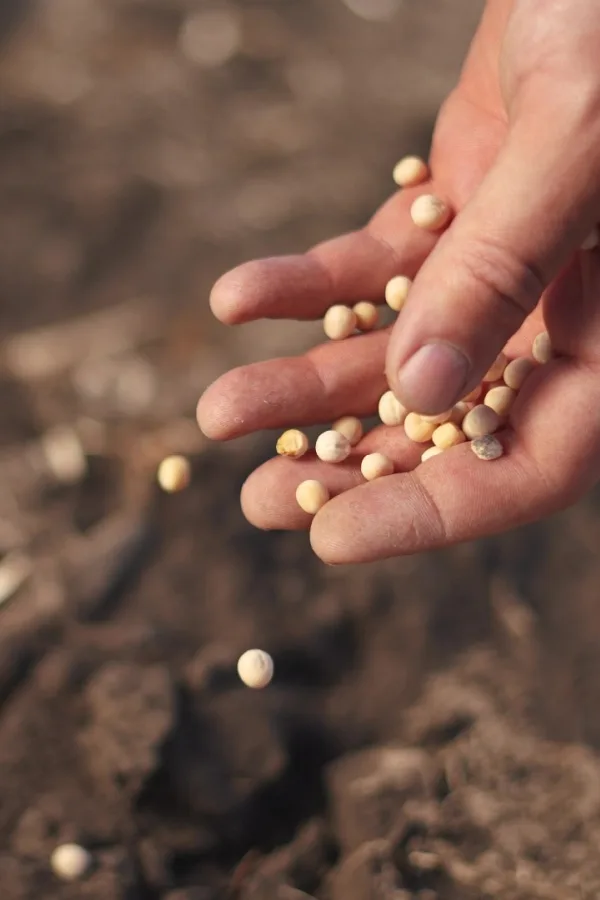
Killing Off The Crop
There are a couple of ways to incorporate a green manure crop back into your garden space. One requires turning the soil over and killing off the crop. You can do this with any green manure crop you grow, as turning over the soil eliminates any new growth.
The other method employs no tilling or turning over the dirt at all – but does require you to plant a crop that can die off by mowing down a few times. Either will work well, it really all comes down to personal preference.
The Tilling Method – How To Plant A Green Manure Crop
The easiest way to kill off a green manure crop in the spring is to cut it down and turn it over. This will not only clip off the top greenery, but by turning it over, will also keep any of the crop from coming back.
By doing this, it incorporates all of the greens and roots into the soil. As they decay, they will continue to give back the nutrients they hold, helping to power the next crop that goes into the space. The easiest way to do this for a large garden space is by tilling.
For smaller plots or raised bed areas, there is no need for tilling. Simply cut down the crop and then use a spade to turn the soil over to kill of the roots. Allow at least a week or ten days before planting once you till or spade under a green manure crop.
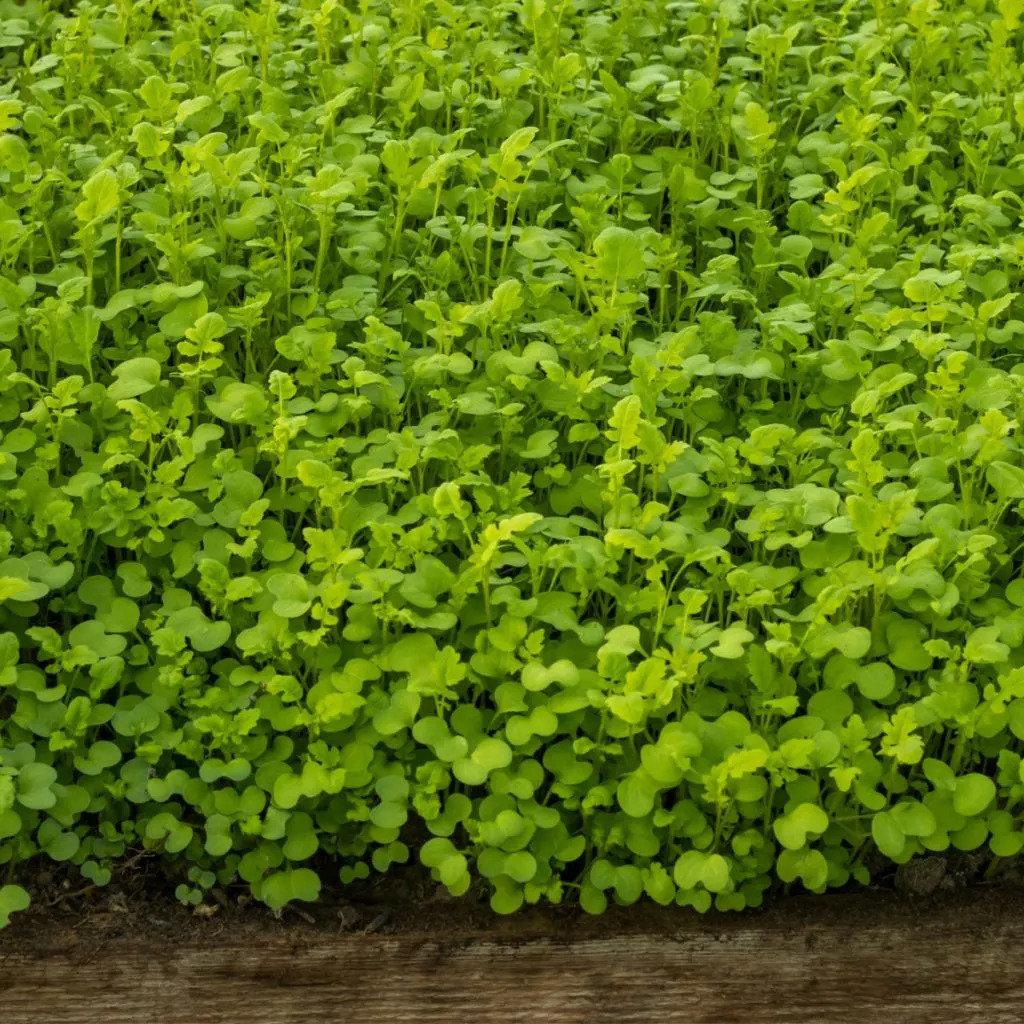
The No Till Method
Many gardeners opt to till or spade under a green manure crop. But there are gardeners who like to employ a no-till method to not disturb the soil. And no-till green manure crops can be quite successful in helping to not bring weeds on the soil surface back to life.
For a no-till green manure crop, you need to plant crops that will die back from simply clipping or mowing off the top growth. Annual rye, peas and even oats will die off after repeated mowing. But the key word here is “repeated”.
Depending on what seed you have chosen, you may have to mow the crop off a few time to allow it to stop all growth. Either way, the crops nutrients are left in the soil, recharging it as they decompose. Mowing should begin after allowing the crop to grow for three to four weeks.
Usually within two to three weeks by mowing the crop back to the ground every few days, the crop will brown off. Planting can then go right through the surface without the need for tilling or digging it under.
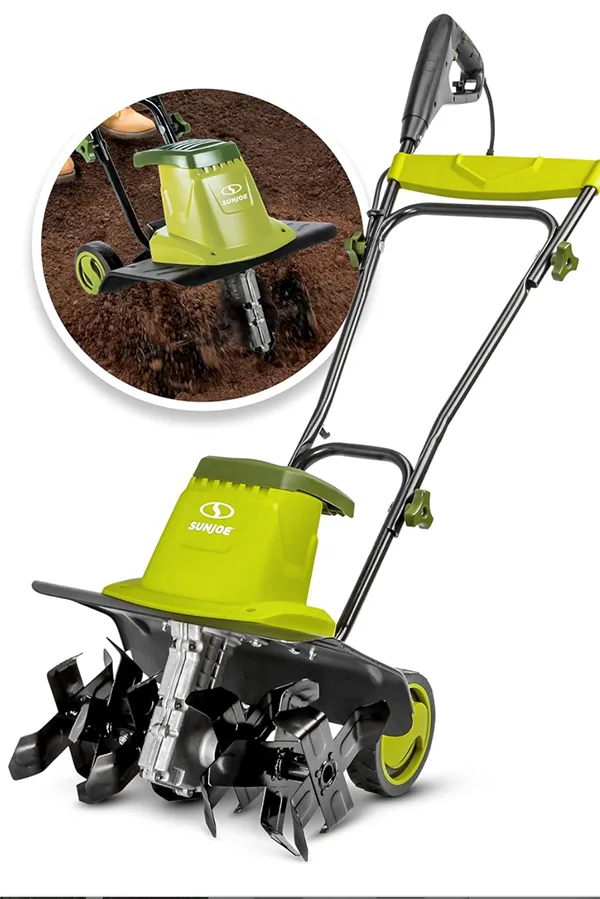
The Best Seed For Early Spring Green Manure Crops
Here is a quick look at a few seed varieties that make for great green manure crops. We have included affiliate seed links with each description as well.
Mustard Seed
Mustard seeds make for a wondrous spring green manure cover crop. They germinate in cool soil and grow fast to fill in the soil. And are they ever full of nutrients! Simply allow to grow for three to four weeks and then till under to stop growth. Affiliate Product Link : Trifecta Power Blend Mustard Seeds
Field Peas
Peas are an excellent crop to grow to replenish available nitrogen in the soil. The crop is not only a cool weather survivor, it actually grows better in it! The roots are excellent at digging into the soil, and also add structure and biomass as they decompose. See: How To Plant Peas As The Perfect Garden Cover Crop
Simply till or dig in two weeks before planting your regular vegetable garden crops. Peas will die back after mowing a few times, making them excellent for no-till gardening efforts too. Affiliate Seed Link : Spring Field Pea Seed
Crimson Clover
A wondrous fixer of nitrogen in the soil, crimson clover is a great choice as a cover crop for those who grow tomatoes, corn and peppers.
It germinates and grows thick quickly to snuff out competing weeds as well. Crimson clover is also a great choice in-season between spring and fall plantings. It is not a good choice for no-till efforts as it will regrow in season. Seed Link : Crimson Clover Seed
Here is to planting a green manure crop in your garden space this year. And even more, recharging your garden soil like never before!
This Is My Garden
Follow Our Facebook Page For Great Gardening Tips And Advice! This Is My Garden Facebook Page
This Is My Garden is a garden website created by gardeners, for gardeners. Jim and Mary Competti have been writing gardening, DIY and recipe articles and books and speaking for over 15 years from their 46 acre Ohio farm. They publish three articles every week, 52 weeks a year. Sign up today to follow via email, or follow along!
